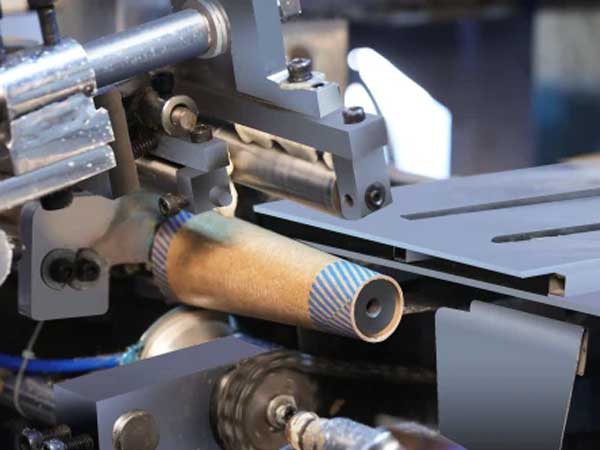The textile industry heavily relies on paper tubes for winding yarn, thread, and fabric. A textile paper tube making machine is essential for producing these tubes efficiently and consistently. This article delves into the intricate working principles of such a machine, highlighting its components, operations, and benefits.

Textile Paper Tube Making Machine Components
A textile paper tube making machine comprises several critical components that work in harmony to produce high-quality paper tubes. Understanding each part’s function is crucial to grasp the overall operation.
Paper Roll Stand
The paper roll stand is where the production process begins. It holds the raw material, typically large rolls of paper. This stand ensures the paper feeds smoothly into the machine, preventing any interruptions in the process. Proper alignment and tension control are vital to maintain a steady flow of paper.
Glue Application Unit
Next in line is the glue application unit. This component applies adhesive to the paper, which is essential for bonding the layers together to form a tube. Glue rollers or applicators spread a uniform layer of glue on the paper’s surface. Transitioning from this stage to winding requires precision, as uneven glue application can lead to weak spots in the tubes.
Winding Unit
The winding unit is the heart of the textile paper tube making machine. Here, the glued paper is wound around a mandrel or forming head, shaping it into a tube. Pressure rollers apply the necessary force to ensure the paper adheres properly and forms a smooth, tight tube. The winding speed and tension are meticulously controlled to achieve the desired tube thickness and strength.
Cutting Unit
Once the paper tube reaches the required length, it moves to the cutting unit. This unit slices the continuous tube into specified lengths using cutting blades or knives. An accurate measurement system ensures precision in cutting, maintaining consistency in tube lengths. Proper alignment and sharpness of the blades are crucial to avoid fraying or uneven cuts.
Drying/Curing Unit
The freshly cut tubes then proceed to the drying or curing unit. This step solidifies the adhesive, ensuring the tubes retain their shape and structural integrity. Drying ovens or chambers use heat to evaporate the moisture from the glue, while some machines might use UV light or curing agents for this purpose. Effective drying or curing is essential to produce durable tubes.
Collection and Packaging
After drying, the finished tubes are collected and prepared for packaging. A discharge conveyor transports the tubes to a collection point, where they are organized and packaged for easy handling and transportation. Efficient collection and packaging systems minimize damage and ensure the tubes are ready for immediate use in textile applications.
Textile Paper Tube Making Machine Benefits
Utilizing a textile paper tube making machine offers numerous advantages to the textile industry. One of the primary benefits is efficiency. Automated operations lead to high production rates, meeting the demands of large-scale textile manufacturing. Consistency is another significant advantage. Precision in winding and cutting ensures uniform tube sizes, reducing waste and improving product quality.
Moreover, these machines offer versatility. They can produce tubes of varying diameters and lengths, catering to different needs within the textile industry. Adjusting the machine settings allows for quick transitions between different tube specifications, enhancing flexibility and productivity.
Conclusion
A textile paper tube making machine is a vital asset for the textile industry, streamlining the production of paper tubes used in various applications. By understanding the working principles of these machines, operators can optimize their performance, ensuring high efficiency and consistent quality. From the initial paper feeding to the final collection and packaging, each component plays a crucial role in producing durable and precise paper tubes. Embracing advanced automation and control systems further enhances these machines’ capabilities, making them indispensable in modern textile manufacturing.
In summary, the textile paper tube making machine, with its intricate design and advanced features, significantly contributes to the efficiency and quality of textile production processes. Its ability to produce high-quality paper tubes consistently and efficiently makes it an essential tool in the textile industry.










